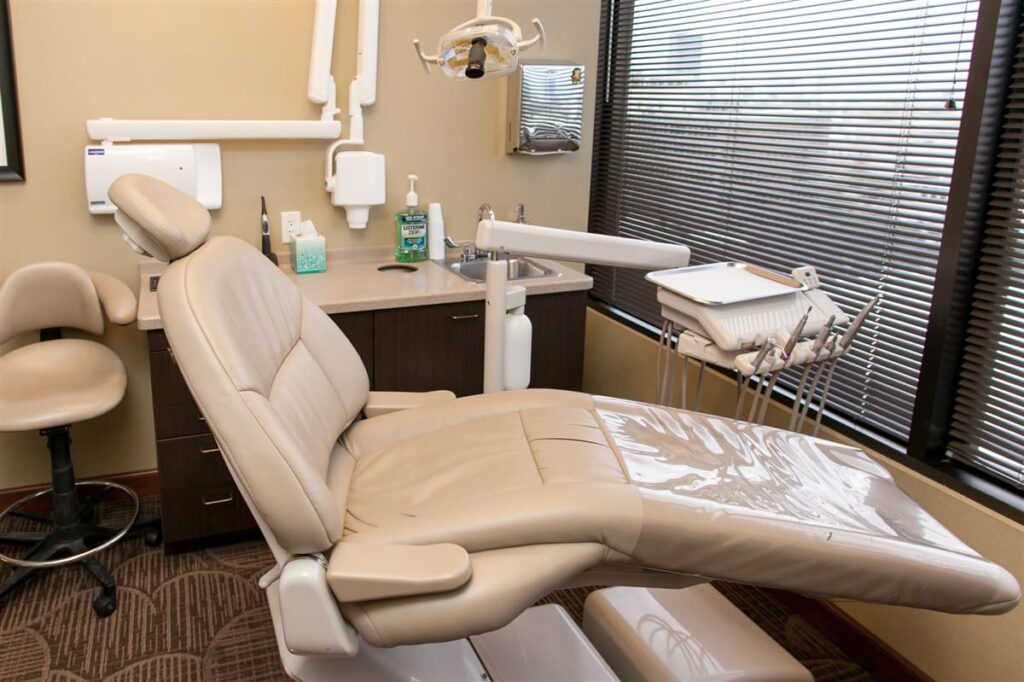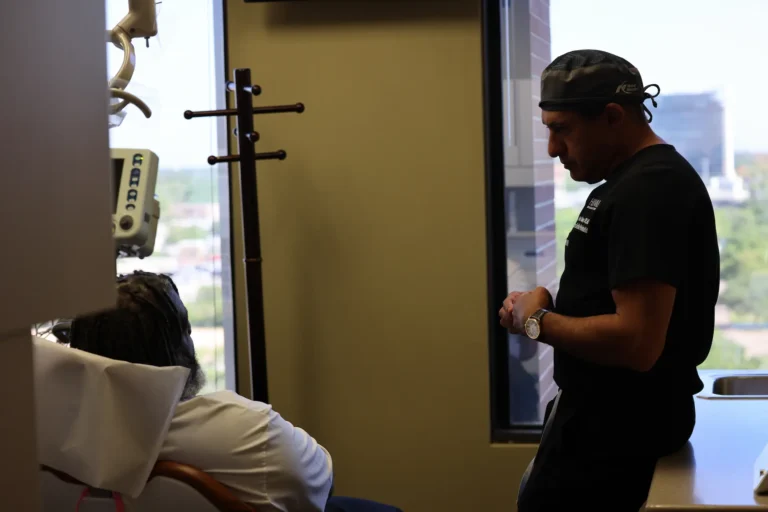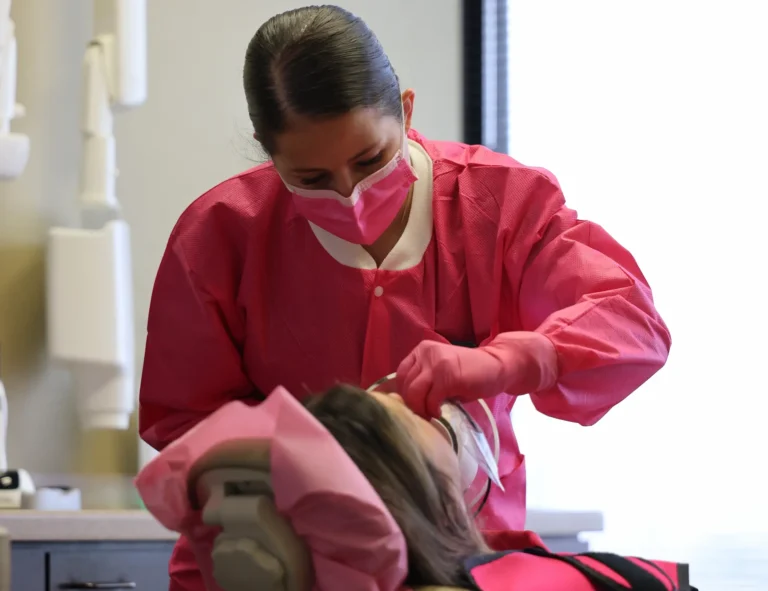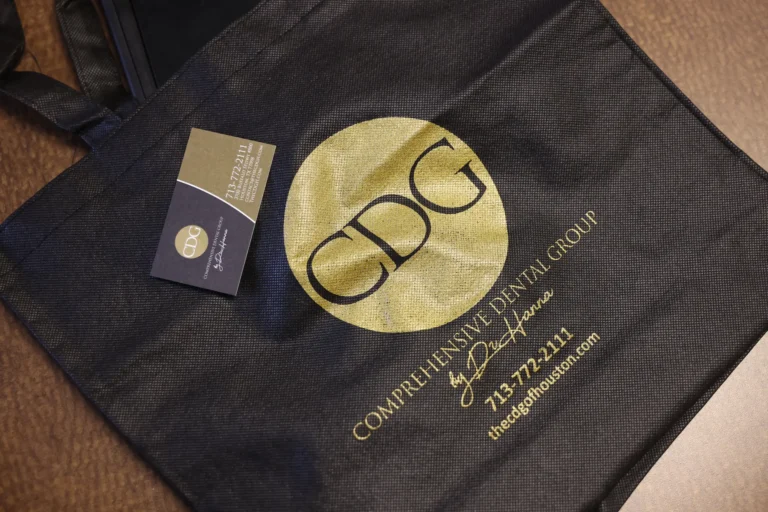How Long Are All-On-Four Procedures?
In this video, Steven Skiff tells us about the length of an all-on-four procedure.
A: It’s a very wide answer to that question. Part of it actually does depend on which doctor you choose to go to. I’ve been in this field for over 15 years and I’ve been seeing All-on-Fours done for ten. I’ve seen some doctors take seven, eight hours to do an All-on-Four procedure and I’ve seen some doctors take two or three.
At the Comprehensive Dental Group by Dr. Hanna, generally, our all All-on-Four is about two hours per arch—so a full upper, lower is typically four. But again, every patient is different and every patient brings different circumstances. So sometimes it’s more complex and it might take an extra hour. Sometimes, they come with no teeth and you don’t have to take time pulling out any remaining teeth, and it takes less than three hours.
What Is All-On-Four?
To fully comprehend what the All-On-Four procedure is, you first need to get a brief intro to dental implants. A dental implant is a small titanium screw that is implanted into your jawbone where a tooth has been lost. It occupies the exact same space as the vacated tooth so there is no crowding or gap. Once the implant is set in the jawbone, the dentist attaches the replacement tooth to the screw completing the restoration.
Dental Implants Made Simpler
All-on-Four dental implants are a simpler, modular form of dental implants that replace multiple missing teeth or inferior solutions such as removable dentures. Utilizing advanced materials and methods, All-on-Four is the perfect replacement for natural teeth.
All-on-Four dental implants support an entire arch of teeth, top or bottom—with just four implants. The replacement teeth look and feel identical to your natural teeth and function just the same. Many patients who have dentures end up upgrading to All-on-Four because of the many added benefits this procedure offers.
How Does All-On-Four Work?
All-on-Four consists of the four of the titanium screws implanted strategically into different spots of the jawbone. These screws serve as the support base for the actual dental restoration will be mounted to. Unlike single implants, this procedure is completed with a full arch of teeth on one solid piece secured to the four screws.
Being a solid piece is the only way this procedure is similar to dentures. However, unlike dentures, the jawbone is stimulated due to implant bonding, and bone atrophy is not an issue. Also, this is a permanent solution—no removing dentures for cleaning and worrying about slippage or other issues.
Even if you have some jawbone loss due to long periods of time without teeth or using dentures, this procedure still might be a good fit for you. When posterior screws are implanted at a 45-degree angle, it can reduce the need for complex bone grafts. This also avoids the nerve canal located in the lower jaw and the sinus cavities which are in the upper jaw. Since this part of the jawbone is denser, it can possibly still support the implants and help save the rest of your jawbone and give you a new smile. Even if bone grafts are necessary, depending on your situation—having to get bone grafted in is still a better solution than living with a deteriorating jawbone.
The Details On All-On-Four
The cost of All-On-Four dental implants can vary depending on the material the replacement teeth are made of and if there are any pre-op procedures such as the aforementioned bone grafts required. Another factor that plays a big part in the overall cost for your procedure is what your insurance plan covers, how much the deductible is and what provider you can use.
Acrylic Or Composite All-On-Four Dental Implants
The All-On-Four procedure at the basic level uses acrylic dentures or composite dentures that are molded to fit your precisely using the titanium implants. Using this option is the more economical way to go but keep in mind that while it will still look similar to natural teeth and feel the same—there is a more popular material option that is also superior.
Porcelain All-On-4 Dental Implants
All-On-Four is also available using upgraded dentures made from porcelain. Porcelain looks identical to natural teeth, feels exactly the same, and lasts much longer than the basic acrylic or composite models. Naturally, the porcelain upgrade comes at a slightly more expensive price point, but the difference is worth it, although either option is better than non-permanent solutions.
What To Expect In An All-On-Four Procedure
Many patients find any type of dental surgery scary, and we understand. It can be quite nerve-racking getting dental implants for the first time. Most of the anxiety and fear regarding dental implants is the lack of knowledge regarding the procedure. Uncertainty is not something we want our patients to worry about when being prepared for this procedure, so let’s go through it one step at a time.
First, Dr. Hanna wants you to be comfortable with a procedure like this, so local or general anesthesia is given to you to make the process much smoother.
Second, he will prep your mouth for the titanium screws that will be implanted, which may include any remaining teeth that have failed. Then Dr. Hanna will also cut away any gum tissue that is infected or diseased, from your jaw and gums.
Then, we begin the implantation phase—inserting the screws into the jawbone at the necessary positions. This is typically two at the front of the mouth, and two at the back of the mouth to evenly distribute the force of the denture when chewing.
Finally, once the dentures have been secured to the implants Dr. Hanna will thoroughly clean the surgical site, suture the incisions and transport you to the recovery area to relax and recover from the anesthesia. That’s it! You’re on your way!
Recovery Time And Expectations
Typically when you get traditional dentures the recovery and adjustment period can last from three months to a year depending on circumstances. All-on-Four procedures, however, have most patients back at work in a couple of days with just some Tylenol.
The reason the recovery time is much faster is that the implant procedure is all done in one shot and since it bonds with your jawbone— stability is achieved immediately.
During the first hour after leaving the recovery room or when bleeding ceases, you will have gauze packs secured over the surgery sites—you need to gently bite on these to secure them in place.
After about an hour or so, a technician will remove the gauze packs provided the bleeding has stopped. If it has not stopped or it’s excessive, you will be re-packed and you’ll be sent home with instructions to change the gauze every 30 minutes or so until bleeding stops.
Once home from surgery, be careful not to do anything to irritate the tender areas in your mouth. DO not touch the surgical sites or rinse them with water, only the medicated rinse we prescribe to you. You can brush them very gently with a soft toothbrush, and of course, smoking is a horrible idea as it prolongs and hinders healing.
The day after surgery, if you still have some minimal bleeding, it’s recommended to gently rinse your mouth using salt water. Just add a tablespoon of salt to an 8oz glass of warm water and gently rinse, and let the water flow out of your mouth into the sink, do not spit. You can repeat this around 2-3 times a day if needed.
Precautions To Take The Rest Of The Week
As for the rest of the week, if you can avoid work, that is the most ideal—even though many return to work in two days. It all depends on what type of work you do. An office job without any hard labor or physical activity shouldn’t be an issue.
Just be sure to avoid bending over, lifting heavier objects, standing too quickly from a seated position, and excessive talking.
Also, you’ll want to make sure to get as much rest as possible and eat softer foods for the next 3-4 days to avoid irritating the surgical site.
Get Your All-On-Four Dental Implants At CDG!
Don’t put off your new smile another day, make the call and schedule yourself for a free consultation with Comprehensive Dental Group and get your smile back with All-On-Four!
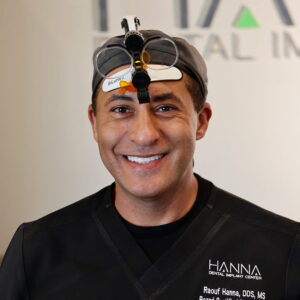
Dr. Raouf Hanna is a double board-certified specialist recognized worldwide for his expertise in dental implantology. With advanced training and decades of experience, he has restored countless smiles through procedures ranging from single implants to full-arch restorations. His focus on precision, innovation, and patient-centered care ensures exceptional results for every case.
In addition to his clinical work, Dr. Hanna is a respected educator and former Clinical Associate Professor of Periodontics at the University of Texas. He has contributed significantly to the advancement of implant dentistry through his teaching, research, and development of multiple patented technologies that have significantly influenced modern treatment techniques.
At The Comprehensive Dental Group of Houston, Dr. Hanna combines his surgical skill with state-of-the-art technology to help patients achieve lasting, natural-looking results.

